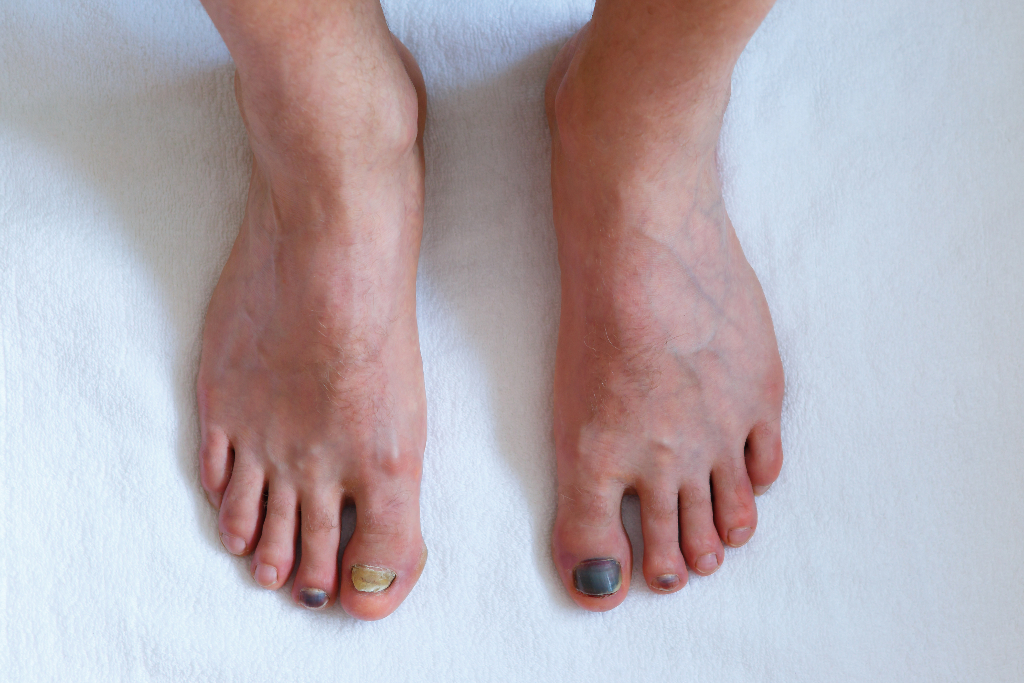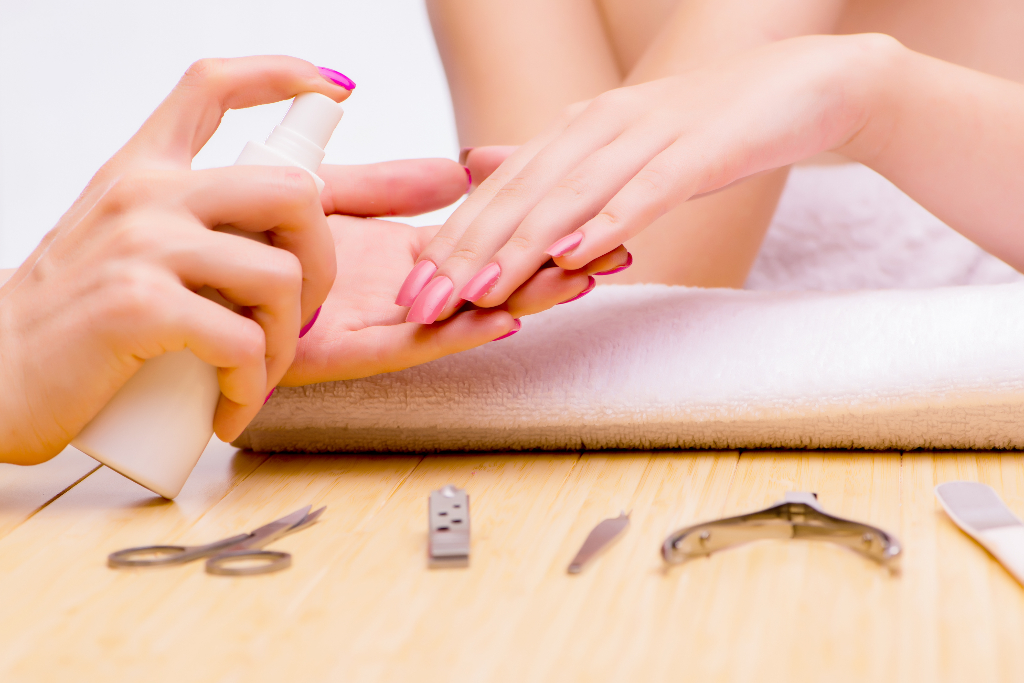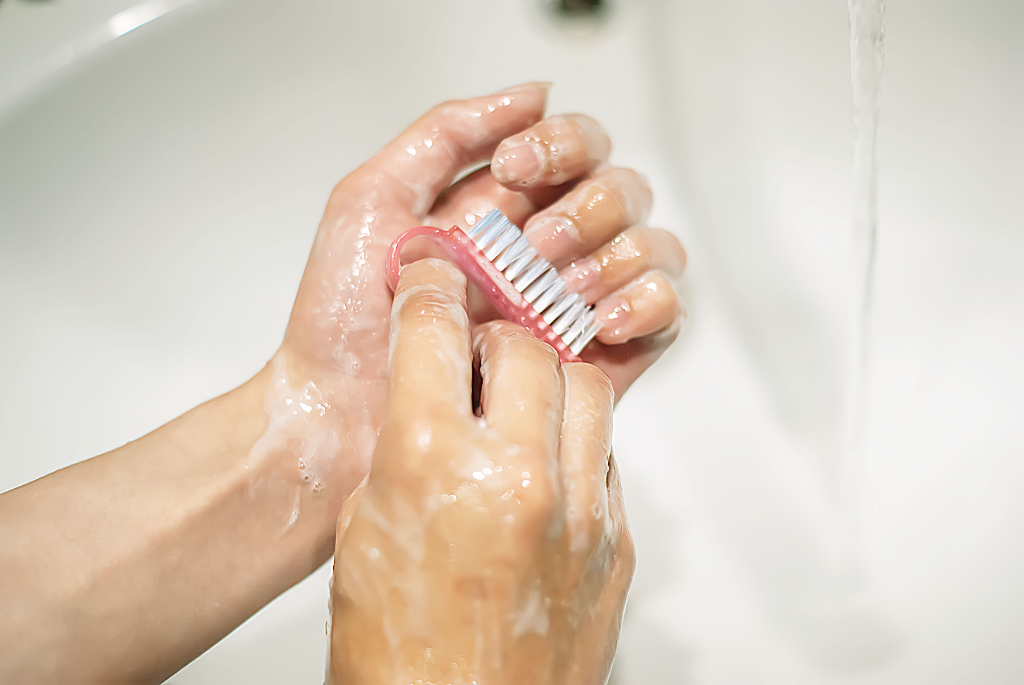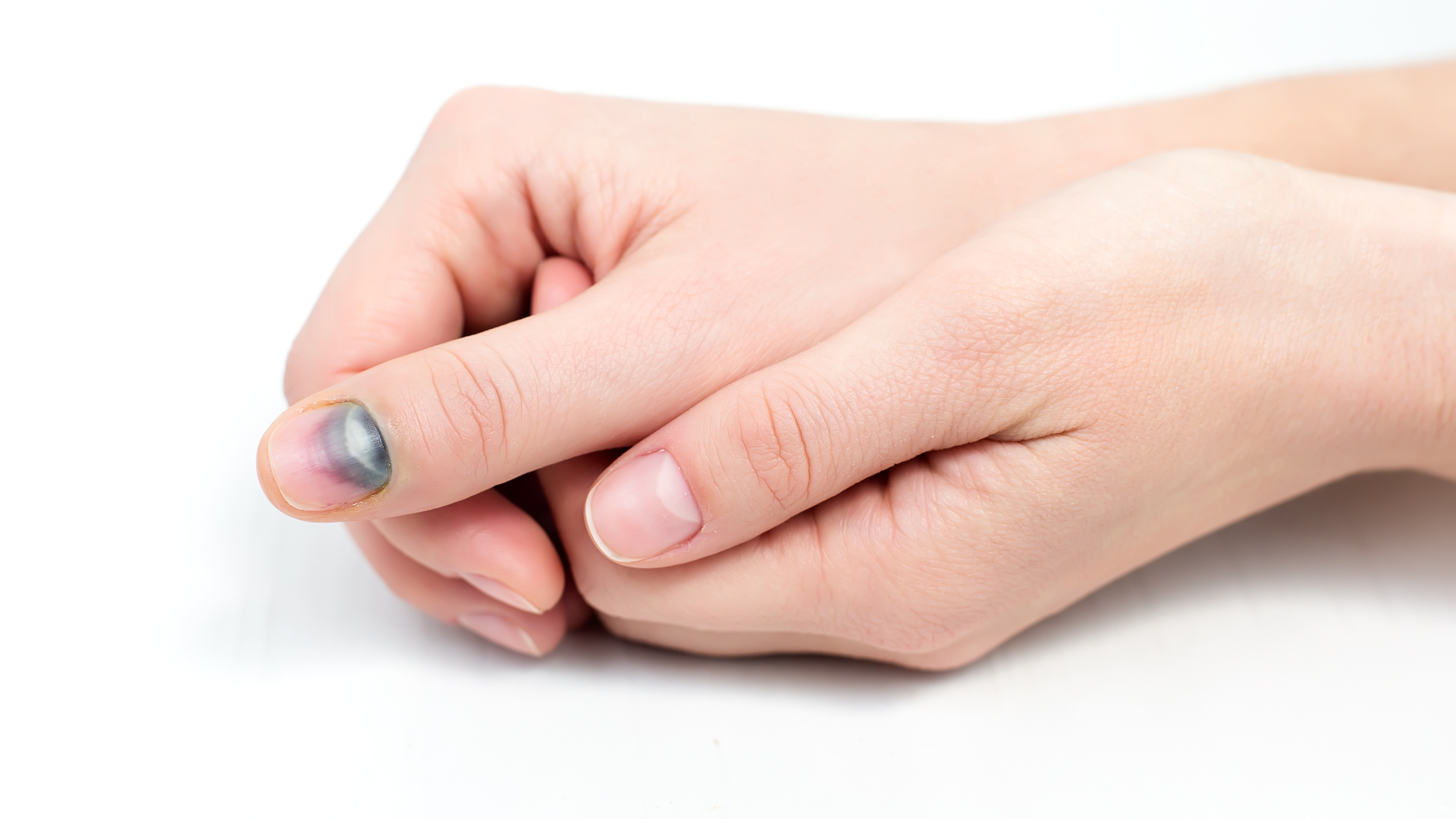The debate between fake and natural nails has been around for years. Some people use fake nails – artificial acrylics – because of their benefits, while others stick to their lengthy but fragile natural nails.
So, you’ve just taken off your false nails, only to discover to your horror that you have greenie nails. Not only are they unsightly and embarrassing, but very alarming when you don’t know how it happened or how to get rid of greenie nails.
We’ll be discussing everything you need to know about greenie nails, as well as whether you should put acrylic over them and the treatments available.
What are greenie nails?
Greenie nails – often referred to as green nail syndrome (GNS) – is a type of nail discoloration that can occur for several reasons. The greenish tint is caused by the pseudomonas aeruginosa bacteria, which thrives in wet environments. The medical name for greenie nails is chloronychia.
These bacterial infections occur between the nail bed and the natural nail plate or between the nail plate and an artificial nail coating. The bacteria can enter the body through cuts or breaks in the skin and can cause greenie nails, as well as other infections such as cellulitis, impetigo, and folliculitis.
Pseudomonas aeruginosa is a gram-negative bacteria that produce green pigments called pyoverdin and pyocyanin. These green pigments are what give greenie nails their characteristic color.
What do greenie nails look like?

The green color is usually most visible at the base of the nail where it meets the cuticle, and the color can range in intensity from light green to dark green. In some cases, greenie nails may also be accompanied by a yellow tinge.
While the nail itself is not usually painful, greenie nails can cause the cuticle and the skin surrounding the nail to become inflamed and tender, which can signal a more serious infection.
Causes of greenie nails
There are a few different things that can cause greenie nails, but the most common is wearing acrylic nails. Acrylic nails are made of a liquid monomer, and a powder polymer mixed together and then applied to the natural nail. The mixture hardens into a plastic-like material that is used to create an artificial nail.
While acrylic nails are very popular, they can increase the risk of greenie nails because they provide the perfect environment for bacteria to thrive. The wet conditions created by the acrylics allow bacteria to grow and multiply, resulting in greenie nails.
Another cause of greenie nails is trauma to the nail. This can happen when you accidentally bang or hit your nail, causing it to bleed. The bacteria can enter the body through the cut or break in the skin and cause greenie nails.
Greenie nails can also be caused by certain medical conditions such as diabetes, psoriasis, eczema, and circulation problems. These conditions can make the nails more susceptible to infection.
As we mentioned, greenie nails are caused by the pseudomonas aeruginosa bacteria, which thrive in wet environments. This bacteria is often found in spas, hot tubs, and swimming pools. It can also be found on unwashed hands, under artificial nails, or in manicure implements that have not been properly sanitized.
Should you put acrylic over greenie nails?

If you’re considering getting fake nails applied over your greenie nails, you may wonder if this is a good idea or if it will make the greenie nails worse.
It’s important to note that greenie nails are a bacterial infection, not a fungal infection like athlete’s foot, so it can’t be passed on from person to person. However, if you have greenie nails and get fake nails put over them, the bacteria can spread to the fake nails and cause them to become discolored.
There are two main reasons why you might want to avoid putting acrylics over greenie nails:
- The green color will likely show through the artificial nail, meaning that your greenie nails will still be visible.
- If the bacteria spread to the artificial nails, they may become discolored and infected, which can be difficult to treat.
What if you just have to put acrylic over your greenie nails?
If you just have to cover your greenie nails by putting acrylic over them, make sure you consult with a skilled, professional, highly trained nail technician. A professional technician will ensure that the important steps of cleaning and disinfecting both the equipment and your nails are taken care of. They will also be aware that it’s a good idea to use a new set of acrylics rather than reusing an old set.
So, while, in general, we recommend allowing your greenie nails to heal naturally and wait until the discoloration grows out, a skilled technician may be able to give you a set of beautiful artificial nails that will cover up your greenie nails until they have healed. We recommend you consult with them to get a professional opinion.
Treatments for greenie nails

If you’re dealing with greenie nails, there are a few different treatment options available to you.
- Soaking: Soak your nails in a vinegar or lemon juice solution. Mix a five percent concentration of white vinegar or lemon juice with water at a ratio of 1:4. Soak your nails twice a day for ten minutes, then dry completely. As the discoloration grows out, keep the nails neat and trimmed with a nail clipper.
- Ointments or Creams: You can also try using an over-the-counter antibiotic ointment or cream such as Bacitracin or Polymyxin B. Start off applying two to four times per day, or as instructed by your professional.
- Chlorine Bleach: You may be able to stop the growth of the pseudomonas aeruginosa bacteria using a solution of chlorine bleach – diluted 1:4 with water – applied directly to the greenie nails.
- Scrub your nails with a toothbrush: This will help to remove any stubborn greenie nail pigment.
- Apply a nail treatment: There are many products on the market that can help to treat greenie nails.
If the greenie nails are particularly bad, or if you have diabetes or another medical condition that makes you more susceptible to infection, you may need to see a doctor or dermatologist for oral antibiotics.
Whichever treatment option you choose, make sure to follow the instructions carefully and continue treatment for as long as recommended. With proper treatment, greenie nails should clear up within a few weeks.
How can greenie nails be prevented?
The best way to prevent greenie nails is to practice good hygiene. This means washing your hands frequently and thoroughly drying them afterward.
You should also avoid sharing manicure implements with others and ensure that any implements you use are properly sanitized.
If you’re going to be exposed to water (such as when swimming or taking a bath), make sure to dry your hands and feet afterward.
And finally, if you’re going to get a manicure or pedicure, choose a reputable salon that uses proper sterilization techniques.
Conclusion
Greenie nails are a common condition, but that doesn’t mean you have to suffer through them. There are many treatment options available, so talk to your professional nail technician to find the best one for you. And with a little bit of care, you can prevent greenie nails from coming back.

